Its been a long time since our last blog post documenting our 30th anniversary trip through Europe. Please excuse the delay and hopefully we will get back on track with this installment.
Leaving Paris we headed 20 km south west from our hotel near the base of the Eiffel Tower to visit a hunting lodge built in 1624 by Louis XIII, which was later ‘spruced up’ by Louis XIV to become the Palace of Versailles. Louis XIV moved from his house in Paris (The Louvre) to Versailles in 1682. The French Royal family and thus the seat of political power in France remained in Versailles until 1789 when the French Revolution forced the Royals back into Paris. The Palace of Versailles is one of the largest and most opulent palaces in the world constructed at a cost of two billion dollars. The few images posted in this blog can not adequately convey the immensity nor extravagancy of the palace and the 19,262 acre gardens that surround it.
Here’s Deb at the gate leading into the central court yard.
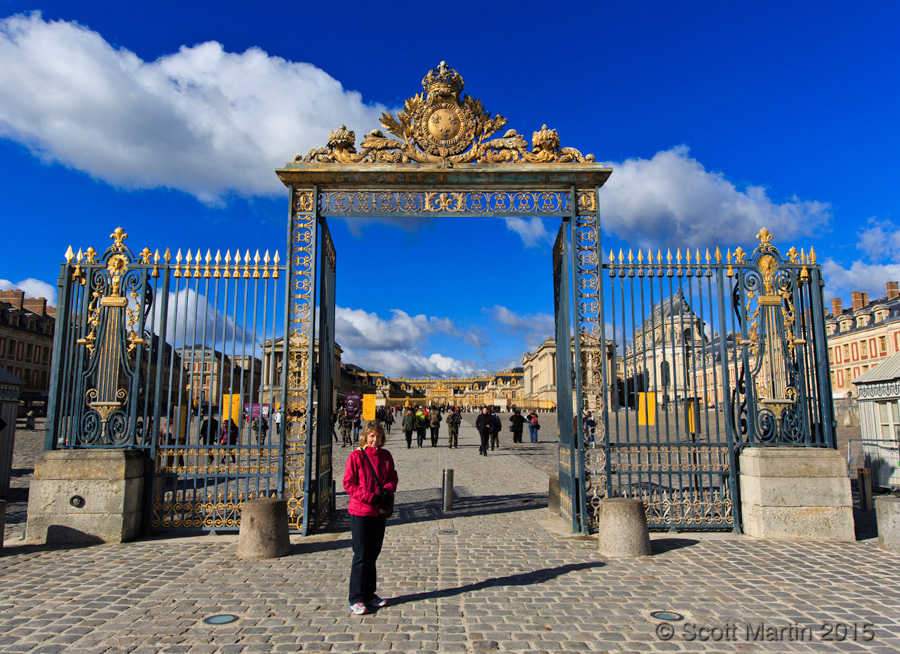
The Royal Chapel required twenty eight years to construct and was completed in 1710. It was only used by Louis XIV for five years before his death in 1715.
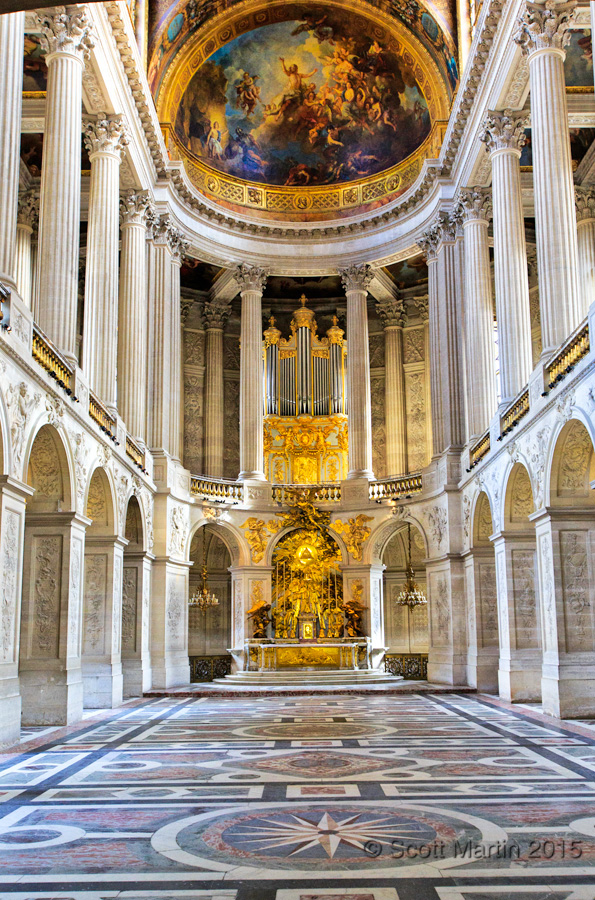
After the ‘new’ chapel was completed the original chapel was repurposed and part of it became the Hercules Salon, the vaulted ceiling of which contains the Apotheosis of Hercules, an enormous painting by Francois Le Moyne. The painting is on canvas which was glued to the ceiling.
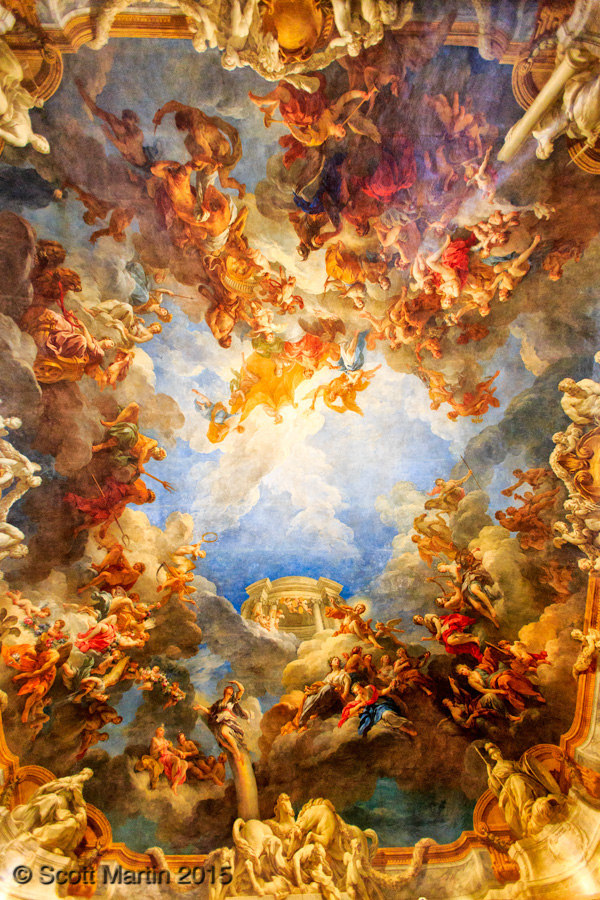
It is difficult to effectively capture the opulence of the palace as virtually every square inch of the building is a visual masterpiece as seen in the image below.
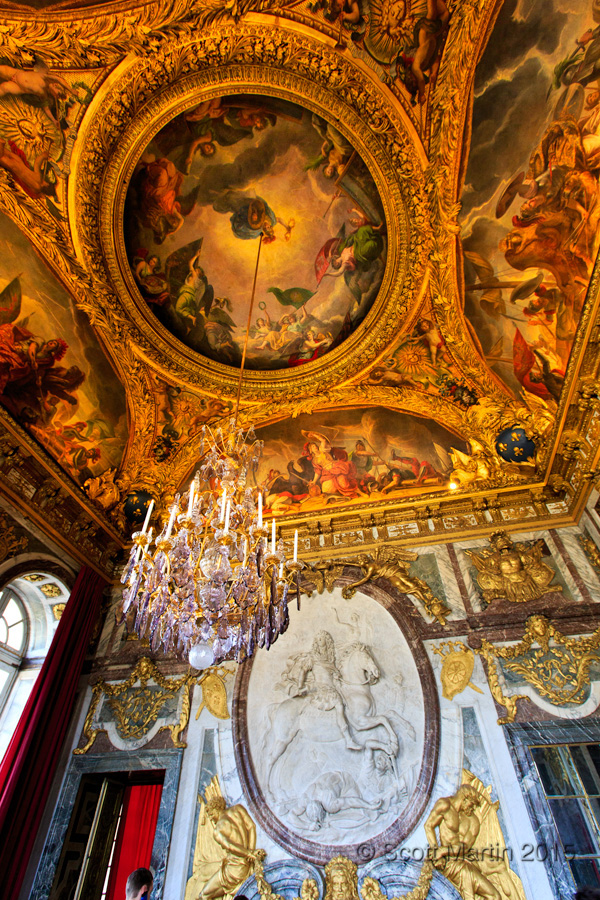
The Hall Of Mirrors is perhaps the most well known room in the palace, and rightly so, as it was designed to show off the political, economic and artistic power of seventeenth century France to all who visited the palace, including heads of state of neighbouring countries and those abroad. The hall is 73 metres long and has 357 mirrors between its 17 marble arches and windows with gilded gold and bronze accents. Seventeen large and twenty six smaller sterling silver chandeliers that cradle 1,000 candles light the hall. The ceiling serves as the canvas for thirty Charles Le Brun masterpieces. The throne was on a podium at the end of the hall, where Louis XIV would receive his visitors after they walked the full length of the hall.
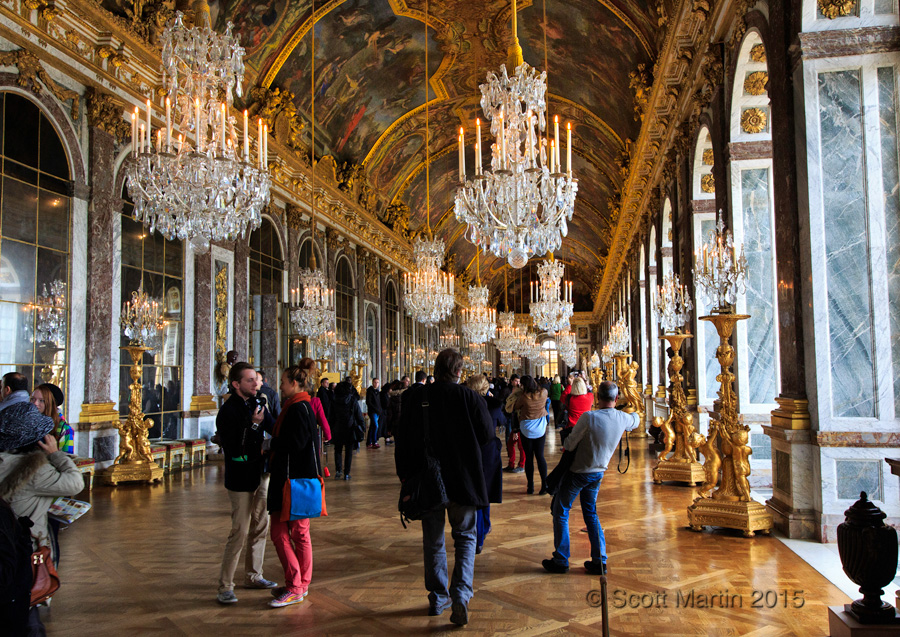
The Treaty of Versailles which marked the end of World War One was signed in the Hall of Mirrors on June 28, 1919.
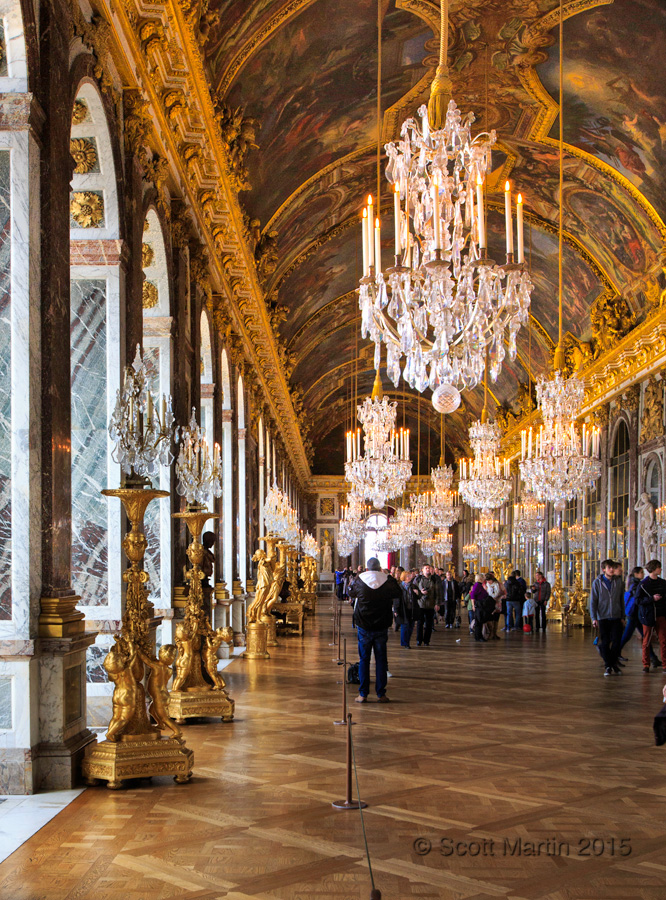
The Salon de la Paix, or Room of Peace is at the end of the Hall of Mirrors at the end where the King’s throne was located.
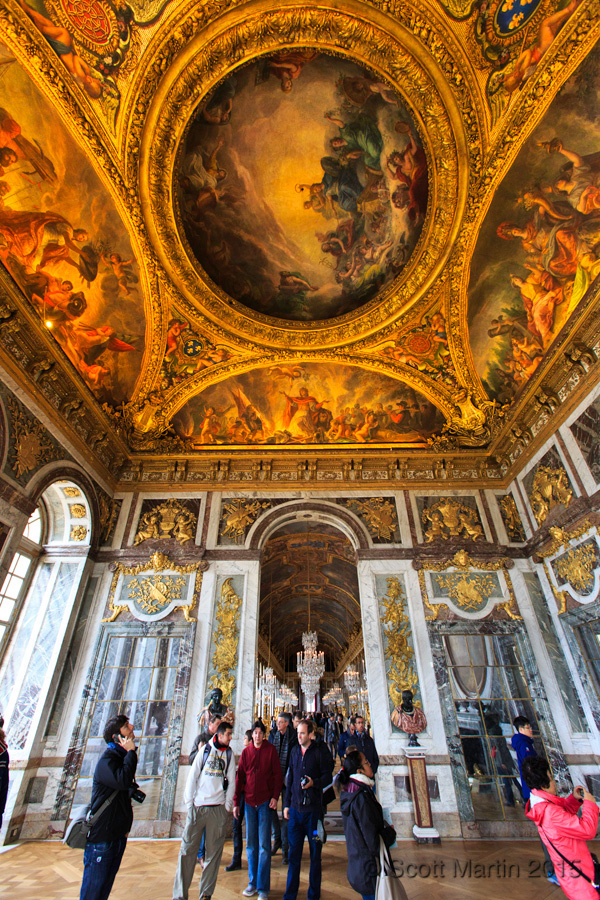
We didn’t spend the extra 10 euros to visit the palace gardens as the flowers were not in bloom while we were there however this image, taken through a window in the palace, gives a small glimpse as to what the gardens and countryside look like. I’m sure in the spring and early summer they would be absolutely spectacular.
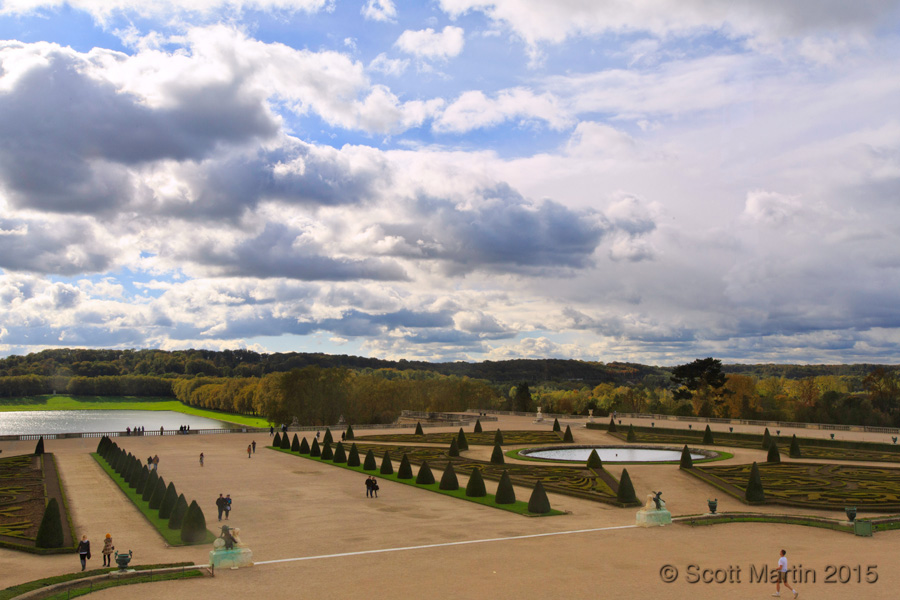
The entrance way to the King’s apartments which include the King’s and Queen’s bedchambers and ultimately leading to the Hall of Mirrors.
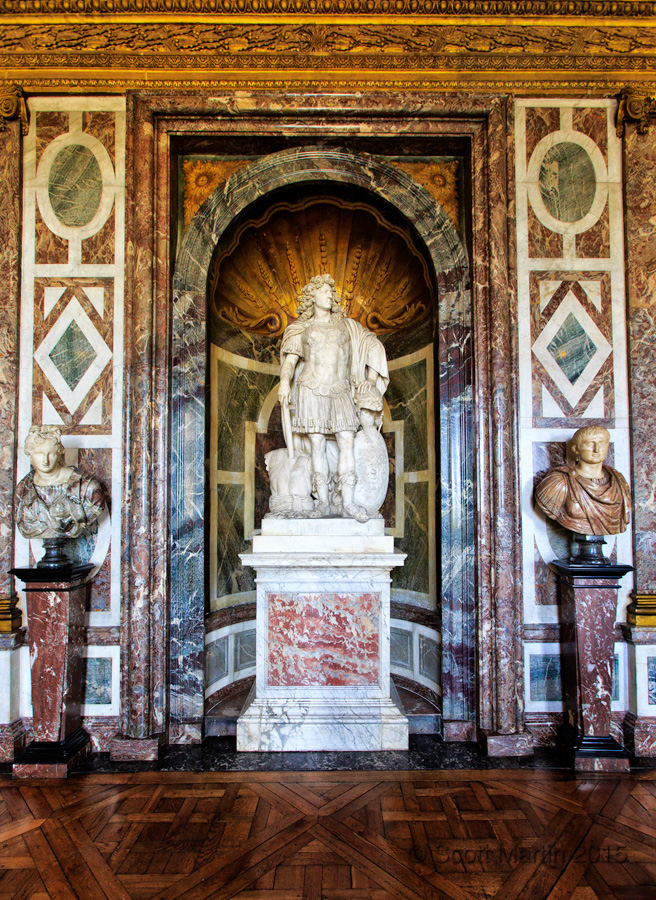
The Mercury Salon, also known as the bedchamber, was rarely used as bed room but rather a gaming room. It is also the room in which Louis XIV lay in state for eight days in September, 1715.
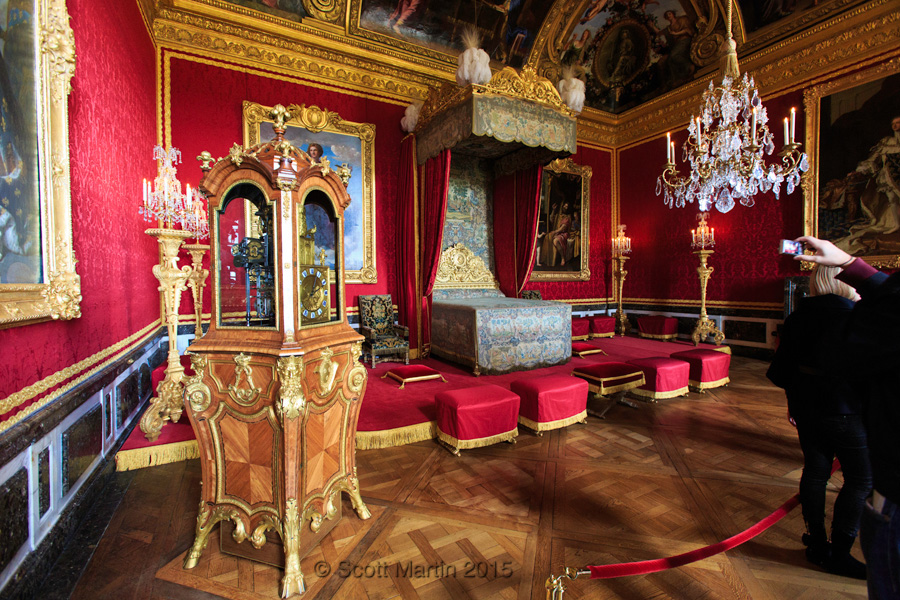
The King’s bedchamber is adjacent to the Hall of Mirrors and designed to face out over the gardens with a wonderful view of the sunrise. Apparently Louis XIV liked to sleep in however as his bed is surrounded by heavy curtains to block out the very sun light the bedroom was designed around! Louis XIV died in this bed on September 1, 1715 after reigning over France for almost 73 years. He was the longest reigning monarch in European history.
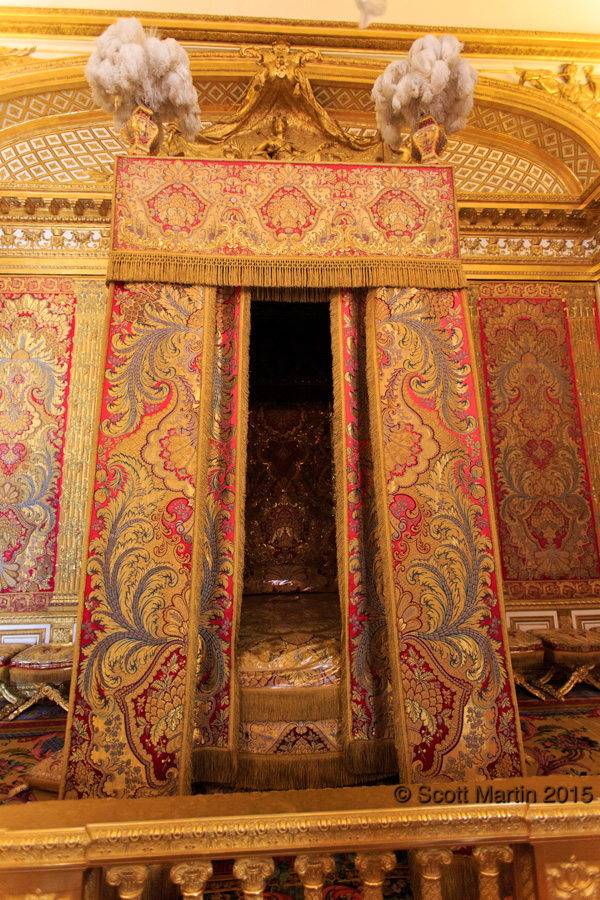
This next pic is of the Queen’s bedchamber. The small open door on the left, next to the jewelry cabinet, is the secret door through which Marie Antoinette escaped when a mob from Paris attacked the palace is 1789. The Queen’s bedchamber is the largest in the palace, including the King’s, as during that era childbirth of the royal family was a public event and believe it or not, more than 200 people attended the birth of Louis XVI.
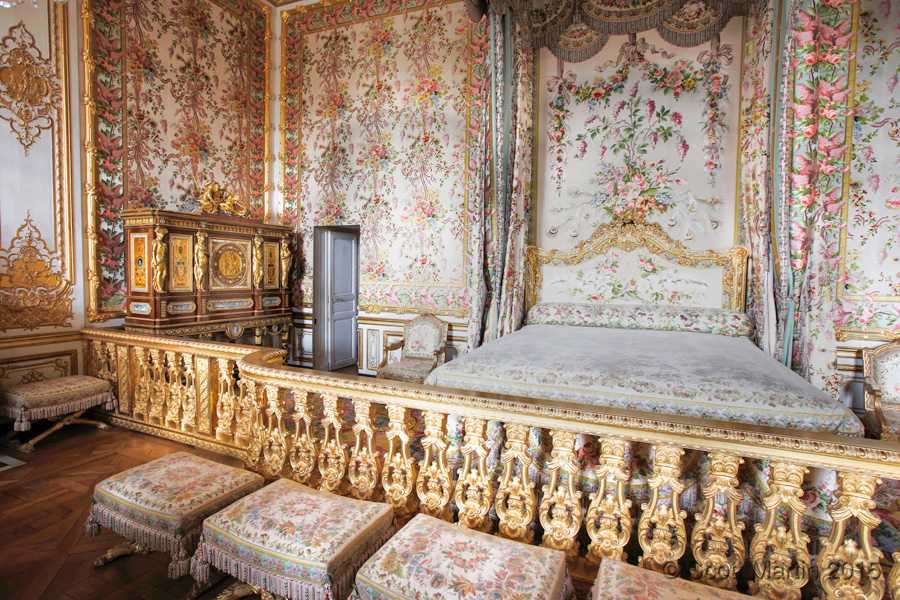
The Battles Gallery is the largest of the galleries in the palace occupying the top two floors of the entire south wing of the palace. Its walls are lined with thirty three huge canvases depicting the major battles fought by France between 496AD and 1809. As the Hall of Mirrors showcased France’s political, economic and artistic superiority, the Battles Gallery showed the military strength and conquest that France was built on.
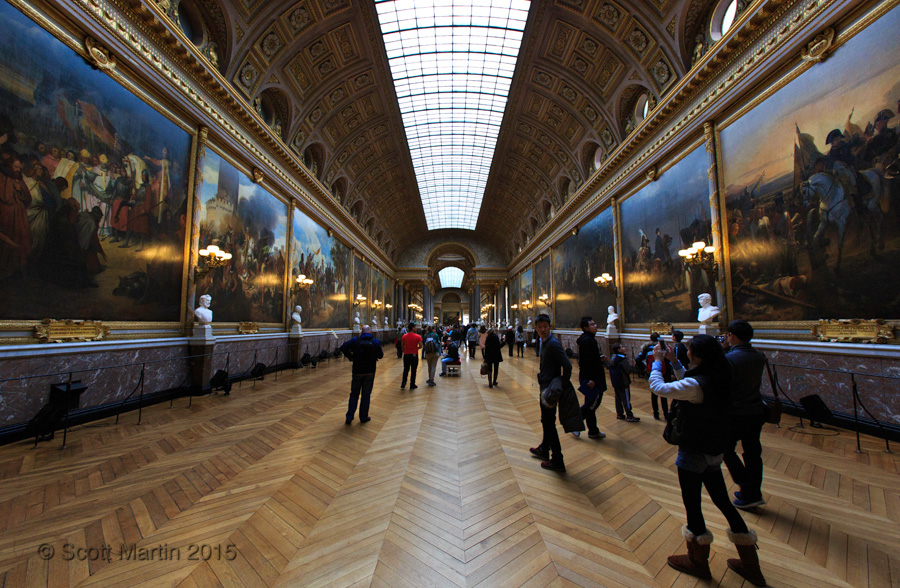
Along the Battles Gallery are extravagant and impressive marble columns with gilded archways. The people in the frame below provide a great perspective as to the size of the gallery.
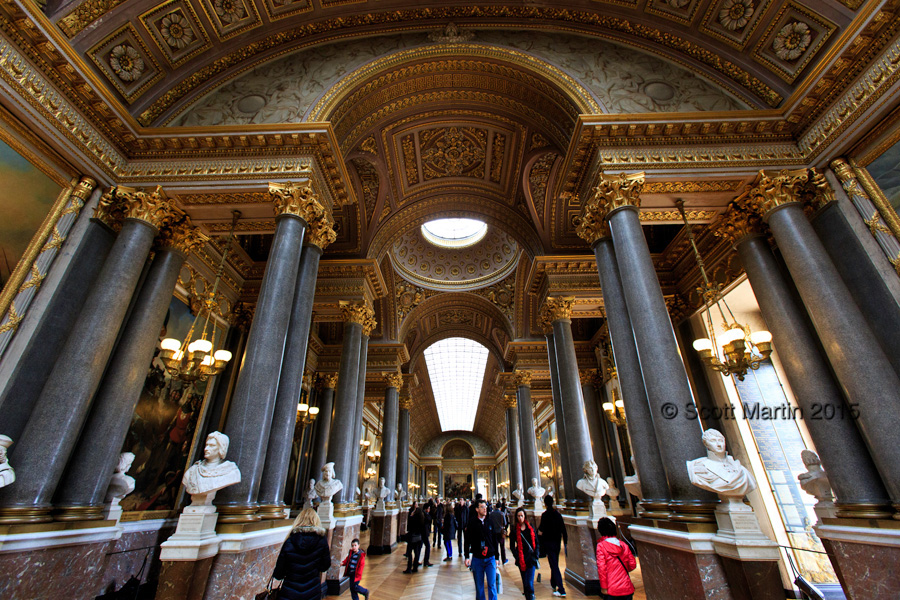
I had to wait a few minutes to get the next image but I really enjoy the two women in the frame. Within the walls of one of the grandest museums in the world proudly depicting the military heritage of France, one women takes it all in pondering each canvas, while the other turns her back to make a cell phone call!
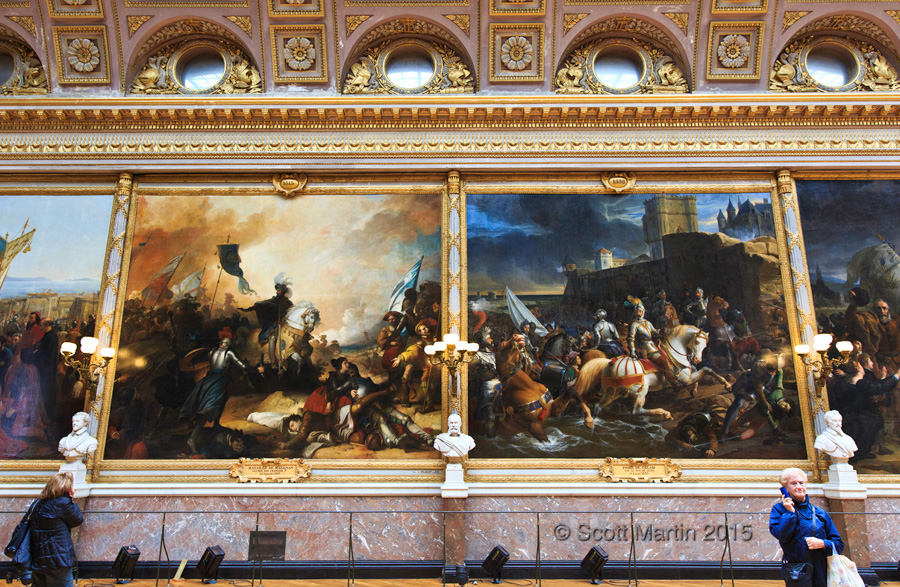
Along the hallway of the Battles Gallery are eighty busts of famous French people.
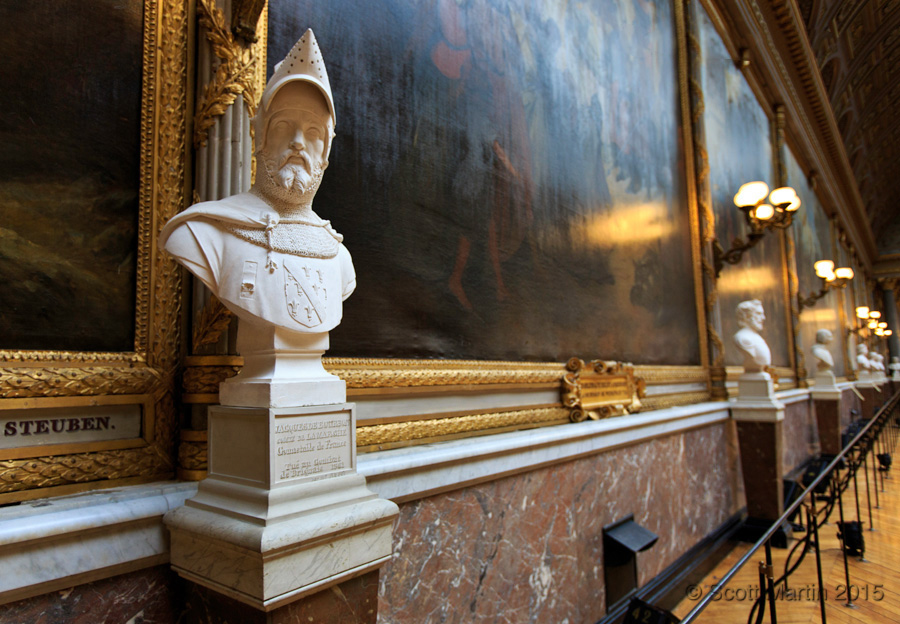
Perhaps my favourite bust was of Rene Descartes (1596-1650) the famous French mathematician and philosopher, known for his famous declaration “I think therefore I am”.
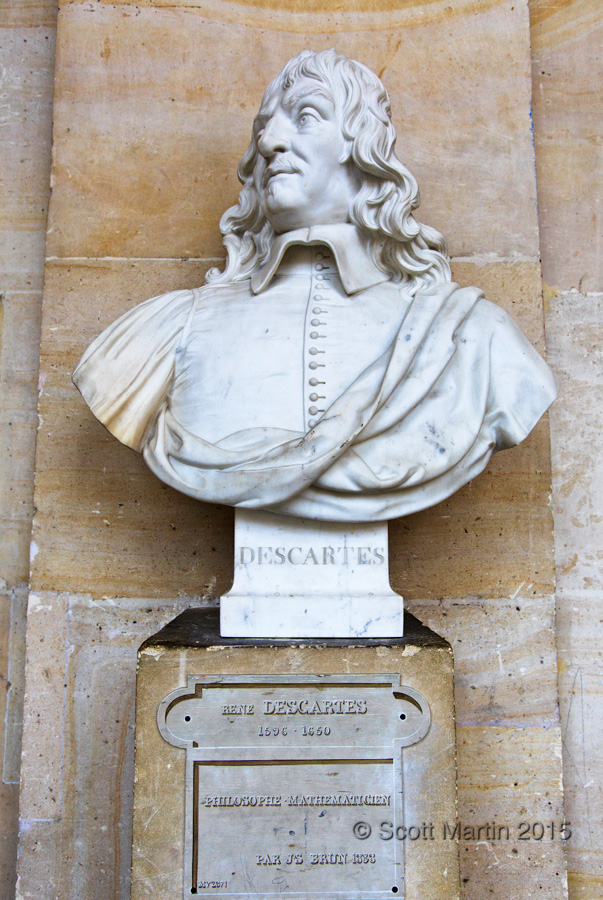
This last photograph is a multi image 180° panorama taken in the inner court yard of the palace. The absolute attention to detail demanded by Louis XIV in the construction of the palace is evidenced by the symmetry of the inner court with each side being a mirror image representation of the other.
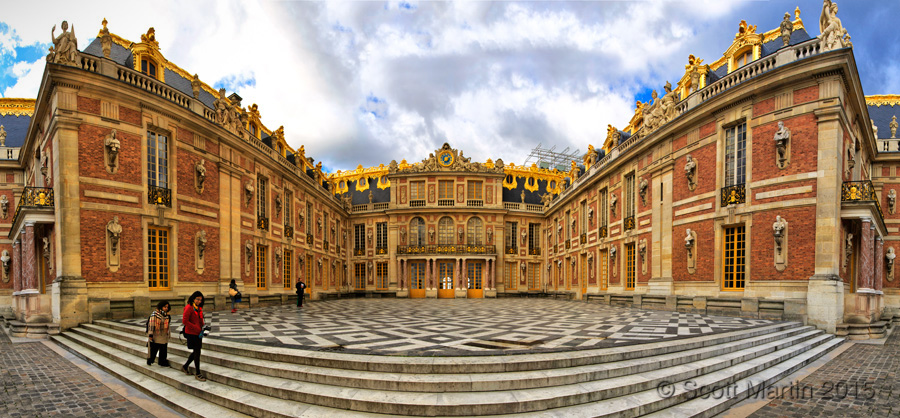
Following our half day long meander through the vast palace we left Versailles and headed south east to Lyon where we spent the night before continuing on the next morning to Antibes, in the French Rivera where we spent a couple of days.
I trust you enjoyed this visual tour through the halls of the Palace of Versailles and as always your comments are much appreciated.


I look forward to reading your posts Scott, not only for your superb images but also for the story or history lesson behind each. Thanks!
Thanks Arni, and its interesting as most of the history is learned after the fact while researching for the blog post!